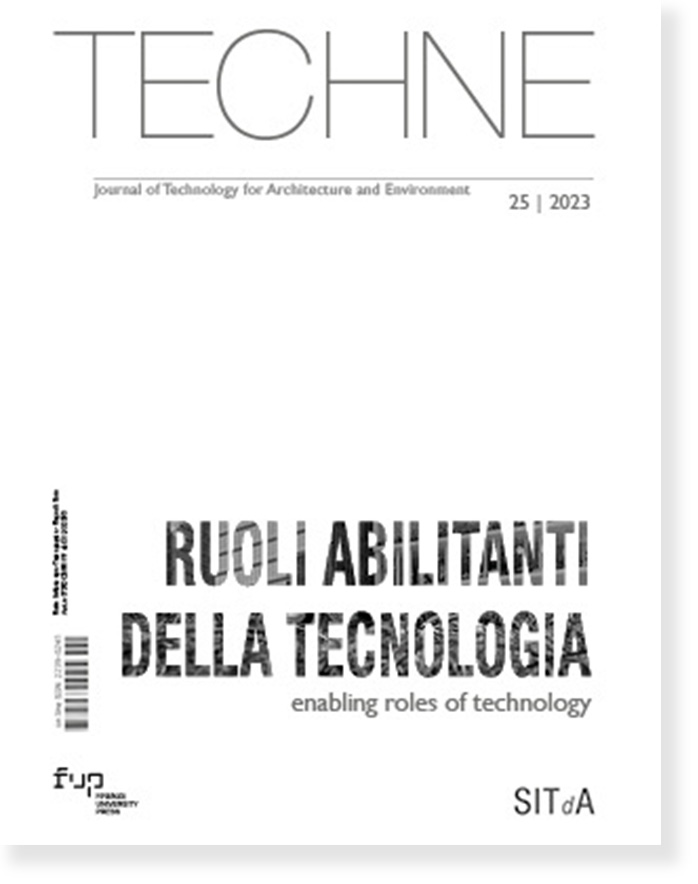Published 2023-05-30
Keywords
- Accessible Public Spaces,
- Inclusive Built Environment,
- Blind Visually Impaired People,
- User-Centred Design,
- User Well-being
How to Cite
Copyright (c) 2023 Andrea Rebecchi

This work is licensed under a Creative Commons Attribution 4.0 International License.
Abstract
The paper describes both the method and the preliminary outcomes of the “Blind-assistive aUtonomous Droid Device: BUDD-e” research experience, funded by Polisocial Award 2021 of Politecnico di Milano, and designed to exploit a multidisciplinary approach to bridge the gap of inclusive design, making spaces and services accessible, functional, and usable by Blind and Visually Impaired (BVI) people. The research purpose is to develop accessible public places and indoor environments where the autonomous robot BUDD-e will act as guide for the BVI people. User-centred design principles will be applied to support accessibility to – both outdoor and indoor – public places, where the robot guide BUDD-e will be a primary feature in allowing access to services.
Downloads
References
Brambilla A., Rebecchi A., Capolongo S. Evidence Based Hospital Design. A literature review of the recent publications about the EBD impact of built environment on hospital occupants’ and organizational outcomes. Annali di Igiene, 2019, 31(2), pp. 165-180. DOI: 10.7416/ai.2019.2269.
Buffoli M, Capolongo S, di Noia M, Gherardi G, Gola M. Healthcare sustainability evaluation systems. In: Capolongo S, Bottero MC, Buffoli M, Lettieri E. (eds.) Improving Sustainability During Hospital Design and Operation: A Multidisciplinary Evaluation Tool. Cham, Switzerland: SpringerBriefs in Applied Sciences and Technology; 2015. p.23-30. doi: 10.1007/978-3-319-14036-0_3.
Capolongo S., Bellini E., Nachiero D., Rebecchi A., Buffoli M. Soft qualities in healthcare. Method and tools for soft qualities design in hospitals’ built environments. Annali di igiene: medicina preventiva e di comunità, 2014, 26(4), pp. 391-399. DOI: 10.7416/ai.2014.1998.
Capolongo S, Bottero MC, Lettieri E, Buffoli M, Bellagarda A, Birocchi M, et al. Healthcare sustainability challenge. In: Capolongo S, Bottero MC, Buffoli M, Lettieri E (Eds). Improving sustainability during hospital design and operation: A multidisciplinary evaluation tool. Cham: Springer; 2015. 1-10. DOI: 10.1007/978-3-319-14036-0_1
Capolongo S, Gola M, di Noia M, Nickolova M, Nachiero D, Rebecchi A, Settimo G, Vittori G, Buffoli M. Social sustainability in healthcare facilities: a rating tool for analyzing and improving social aspects in environments of care. Ann. Istituto Superiore Sanità. 2016; 52(1):15-23. doi: 10.4415/ANN_16_01_06.
Capolongo S., Rebecchi A., Buffoli M., Appolloni L., Signorelli C., Fara G.M., D’Alessandro D. COVID-19 and cities: From urban health strategies to the pandemic challenge. a decalogue of public health opportunities. Acta Biomedica, 2020, 91(2), pp. 13-22. DOI: 10.23750/abm.v91i2.9515.
Chuang, T-K et al., Deep Trail-Following Robotic Guide Dog in Pedestrian Environments for People who are Blind and Visually Impaired - Learning from Virtual and Real Worlds, IEEE International Conference on Robotics and Automation (ICRA), 2018, 5849-5855
Elgendy, M. et al, Making shopping easy for people with visual impairment using mobile assistive technologies, Applied Science, 2019, 1061
Guerreiro, J. et al, CaBot: Designing and evaluating an autonomous navigation robot for blind people, Proceedings of ASSETS ’19 Conference, 2019b, 68-82
Guerreiro, J. et al, Airport accessibility and navigation assistance for people with visual impairments, Proceedings of the 2019 CHI Conference on Human Factors in Computing Systems, 2019a, Paper 16
Hersh, M. A. and Johnson, M. A., A robotic guide for blind people Part 2: gender and national analysis of a multi-national survey and the application of the survey results and the CAT model to framing robot design specifications, Applied bionics and biomechanics, 9, 2012, 29-43
Kulkarni, A. et al., Robotic assistance in indoor navigation for people who are blind, 2016 11th ACM/IEEE International Conference on Human-Robot Interaction (HRI), 2016, 461-462
Manduchi, R. and Kurniawan, S., Mobility-related accidents experienced by people with visual impairment, Insight: Research and practice in visual impairment and blindness, 4(2), 44-54, 2011
Mosca E.I., Herssens J., Rebecchi A., Capolongo S. Inspiring architects in the application of design for all: Knowledge transfer methods and tools. Journal of Accessibility and Design for All, 2019, 9(1), pp. 1-24. DOI: 10.17411/jacces.v9i1.147.
Tobita, K. et al, Examination of a guidance robot for visually impaired people, Journal of Robotics and Mechatronics, 29 (4), 2017, 720-727
Zeng, L., A Survey: Outdoor Mobility Experiences by the Visually Impaired, Mensch & Computer - Workshopband, 2015
Zeng, L. et al, HepticRein: design and development of an interactive haptic rein for a guidance robot, ICCHP, 2019, LNCS 10897, K. Miesenberger and G. Kouroupetroglou (Eds.), 2018, 94-101






